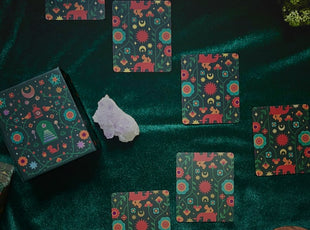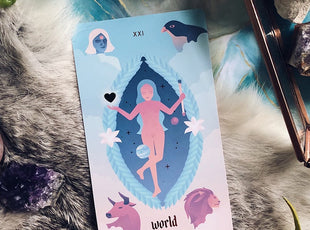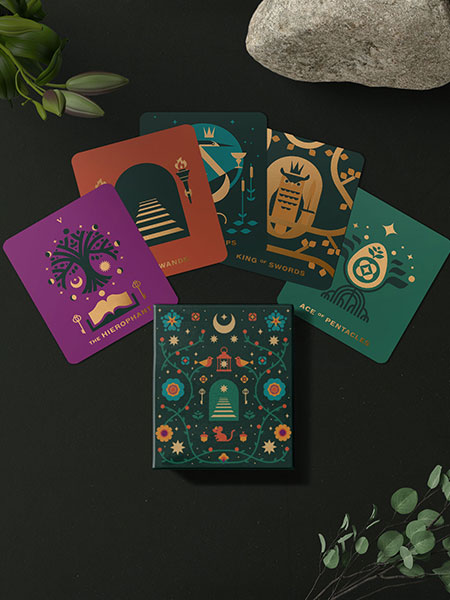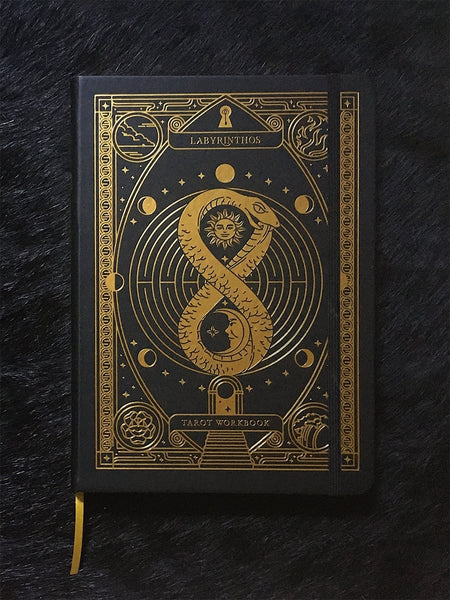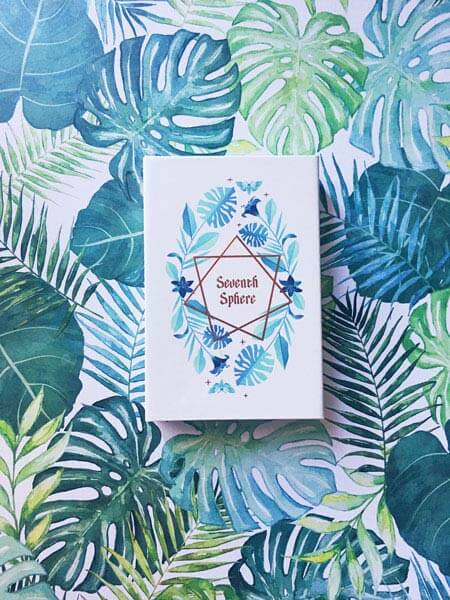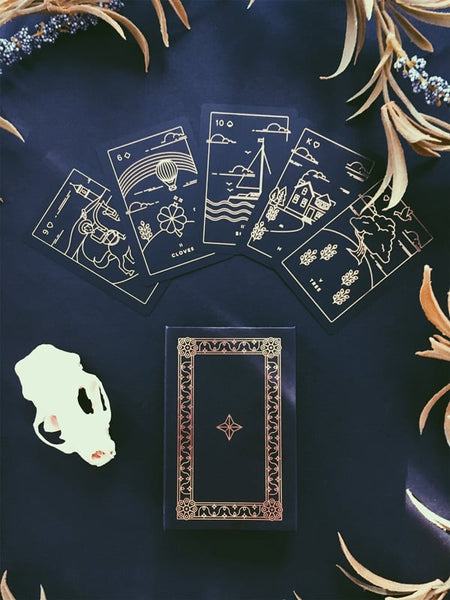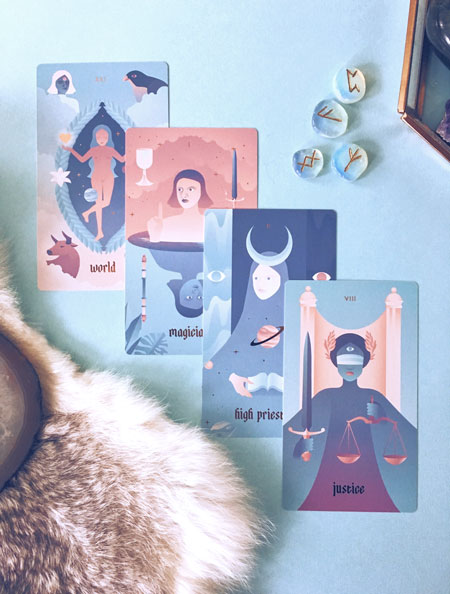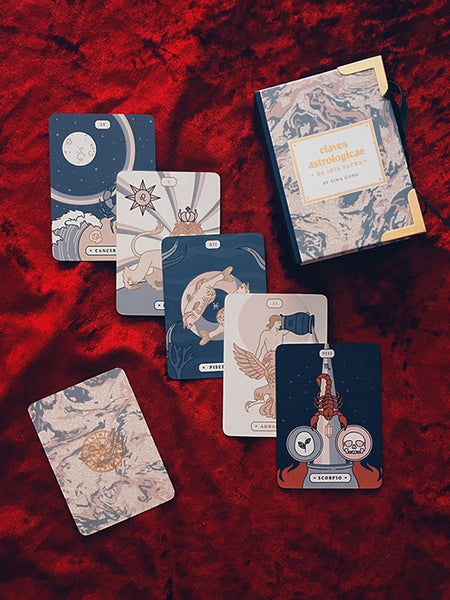✦ ✦ ✦
Maslow’s Hierarchy of Needs - A 5 Card Tarot Spread
Published
What is Maslow’s Hierarchy of Needs?
Maslow’s Hierarchy of Needs is one of the most well-known theories in psychology regarding human behavior and what motivates our actions. The concept was first coined in a 1943 paper called “A Theory on Human Motivation”.
Named after its creator, Abraham Maslow, this theory focuses on the idea that human beings have certain needs in their lives and that these needs can be organized into a hierarchy based upon how primitive or advanced these needs are, with higher needs becoming relevant only once lower and more basic needs are met.
Typically, this hierarchy is viewed as a pyramid that has five separate levels (one level for each need).
Why A 5 Card Tarot Spread on the Hierarchy of Needs?
If you’re anything like me, you may be someone that has trouble expressing and conveying your needs, or you may consistently be placing the needs of others above your own. You may have learned this as a coping mechanism growing up; and as a habit you picked up in childhood, it can be extremely difficult to let go. Consistently ignoring your own needs on a regular basis can really be really detrimental to both your own sense of self, as well as your relationships.
I sometimes felt resentful and angry because my needs were not being met, usually because I was either unable or too scared to express them. I still struggle with it sometimes; fearing that the person that I need something from will retaliate in some way. In fact, I became so bad at expressing my needs at one point, constantly pushing them to the back of my mind that I had a hard time even being able to detect them. Learning to be able to express my needs became a big part of learning to function.
Get Tarot Readings, Wherever You Are
Find answers and connect with your inner self. Our app is free forever. Get free printable cheat sheets when you sign up.
The Five Parts of Maslow’s Hierarchy of Needs
As mentioned previously, there are five levels to the Hierarchy of Needs that Maslow proposes (with those five levels also being classified even further as basic needs, psychological needs, and self-fulfillment needs). These five levels of needs are as follows (in ascending order, from the bottom of the pyramid to the top):
- Physiological: This part of the hierarchy relates to a person’s physical needs; including the need for air to breathe, the need for water and other fluids to stay hydrated, the need for sleep to stay well-rested and functional, food to stay energized, warmth to keep your physical body healthy, and so on. This level of the hierarchy is the foundation of the pyramid and falls under the classification of “basic needs”.
- Safety: This is the part of the hierarchy that refers to a person’s need for shelter (such as a home, or at least somewhere to rest) and stability. This level also encompasses things like the availability and security of resources (since a feeling of safety is dependent upon knowing that you have enough food and water to sustain yourself), employment stability (since you won’t feel financially secure without a steady source of income), the well-being of the person’s family, and so on. The safety level of the hierarchy also falls under the classification of “basic needs”.
- Love and Belonging: This level of the hierarchy falls under the classification of “psychological needs”. It relates to a person needing to feel like they belong and are loved. This can refer to a person’s familial connections but also friendships and romantic connections as well.
- Esteem: This also falls under the heading of “psychological needs”. This need refers to a person’s need for recognition, respect, and acknowledgement, as well as the general desire to accomplish things and have those accomplishments be recognized and appreciated.
- Self-Actualization: The final level of Maslow’s Hierarchy of Needs, this need is classified as a self-fulfillment need and refers to a person’s need to achieve their full potential. This includes getting satisfaction and fulfillment from creative endeavors and other activities that can enrich your life. Essentially, this level of the hierarchy emphasizes personal growth.
Using the 5 Card Tarot Spread on the Hierarchy of Needs
This 5 card tarot spread was made as a way of checking in on my own needs. Tarot is one of my personal methods of self-care, and has become a daily ritual in my life. It only made sense that this spread would show up eventually along the road. For the sake of space and visuals, the bottom of the triangle represents the “basic needs”, while the middle layer represents the “psychological needs” and the top single card represents the self-actualization need.
A 5 Card Tarot Spread on Maslow’s Hierarchy of Needs
The spread itself is simple enough. Each card represents one of the levels of Maslow’s Hierarchy of Needs, and can represent all of the following. Allow your intuition to make the connections between the card and the position.
- The particular nature of the need (a pentacle card in the safety position can indicate your feelings of security around money).
- How you feel about the need
- How the need is or is not being met
- Whether you are expressing the need.
If you’d rather have individual questions, we included these within the spread details below.
- Physiological - What is the state of my health? What must I take care of in order to unlock my potential elsewhere?
- Safety - How do I feel about my sense of security and stability? What is my relationship to finances like?
- Love and Belonging - With whom or where can I find love and care? How can I create the love and belonging that I need?
- Esteem - Why am I deserving of admiration? What is my best quality and skill?
- Self-Actualization - What is my true purpose? What will help me find or achieve my true purpose?
5 Card Tarot Spread on Maslow’s Hierarchy of Needs - Diagram

2 comments
-
TeresaThis is the most logical spread I’ve seen. It’s self explanatory.
-
LeahI could have written the first paragraphs of this post!! Notice I said ‘could’…. Recently I was introduced to a system called Human Design. I’d never heard of it but there’s gobs of info on it. It ’s very cool. This is your invitation. You will know what I mean by this if you are curious about your self and decide to take a look.
